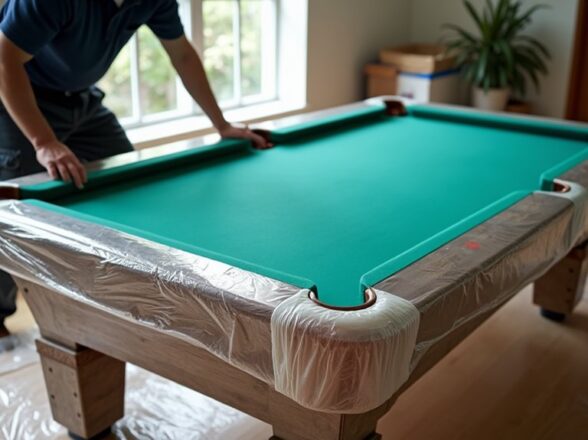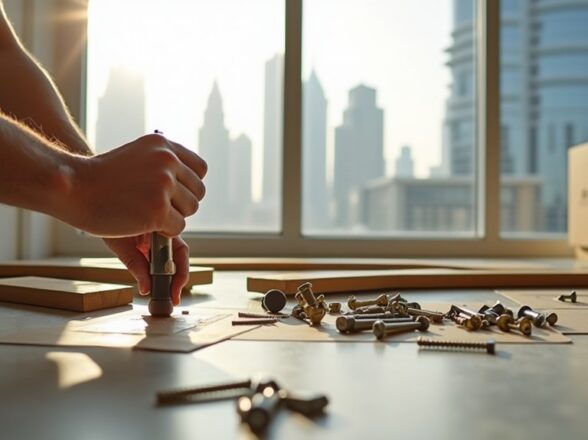What Are the Differences Between Moving Art vs. Antique Collections? Key Factors in Handling, Packing, and Costs

Moving fine art and antique collections requires different approaches due to their unique characteristics. Fine art often needs climate control and acid-free packing materials to prevent damage. Antiques, on the other hand, benefit from sturdy crates and padded wrapping for protection. Both demand careful handling and thorough insurance coverage due to their high value. Customs regulations are essential for international moves, necessitating detailed documentation. Each item should be packed securely and labeled for safety during transport. Understanding these differences helps guarantee a successful move, and there's more to explore on best practices and costs associated with each type.
Fragility and Value

When you're moving fine art or antiques, understanding their fragility and value is vital. These irreplaceable items often hold significant financial and historical worth. Their delicate nature means they can easily suffer damage or loss if not handled properly. Each piece has unique needs that require careful attention during transportation. Proper handling techniques are essential to preserve their condition. Centuries-old antiques might need different considerations than modern artworks. Environmental factors like temperature and humidity can also impact these items, making specialized packing methods necessary. By recognizing the fragility and value of your art and antiques, you can minimize risks during the move. This guarantees that these valuable pieces remain safe for future generations to appreciate. In Dubai, movers offer climate-controlled storage facilities to ensure the protection of sensitive items like art and antiques during transport.
Customized Packing Solutions
When it comes to moving art and antique collections, customized packing solutions are essential. You need tailored packing materials that match the unique requirements of each item, whether it's delicate artwork needing soft wraps or antiques needing sturdy crates. Specialized handling techniques and transport methods guarantee that every piece arrives safely at its destination. Utilizing specialty moving services ensures that your valuable items are transported with precision, care, and expertise, minimizing the risk of damage.
Tailored Packing Materials
Tailored packing materials play an essential role in protecting your art and antique collections during transport. Using acid-free tissue paper and custom-engineered crates helps prevent damage, ensuring the integrity of each piece. For fragile artworks, you'll need specialized cushioning materials like bubble wrap and foam inserts to absorb shocks and minimize movement. Antiques may require anti-static materials or vapor barriers to guard against environmental factors such as humidity and temperature changes. Custom packaging solutions are designed with the specific dimensions, weight, and fragility of each item in mind. Opting for museum-quality packing materials markedly reduces the risk of damage, enhancing the overall safety of your valuable collections during relocation. Professional movers can significantly reduce the likelihood of fragile item damage by employing high-quality packing materials and specialized techniques, ensuring your collections are handled with care.
Unique Transport Methods
Packing materials alone won't guarantee safe transport; unique methods are just as important. When moving valuable art and antiques, you need tailored solutions that fit their specific shapes and fragility. For instance, artworks often require acid-free packing materials to prevent damage, while antiques might need custom crates designed to absorb impacts. Climate-controlled transport is essential for maintaining stable temperature and humidity levels, especially for sensitive items. Utilizing professional assistance can enhance safety and facilitate compliance with regulations. Their attention to detail assures that each piece is packed according to its unique needs. By incorporating these unique transport methods, you greatly reduce the risk of damage during transit, making your move smoother and more secure. Additionally, secure storage options are available for both short-term and long-term needs, providing peace of mind for items that require extra protection during transitions.
Specialized Handling Techniques
To guarantee your art and antique collections arrive safely, specialized handling techniques are essential. Each item requires meticulous planning to guarantee protection during transit. Art pieces often need custom crates and acid-free materials, while antiques benefit from padded wrapping.
Consider these specialized packing techniques:
- Assess each piece for specific packing needs
- Use museum-quality materials for added protection
- Implement climate-controlled transport to prevent damage
- Collaborate with experts to maintain irreplaceable value
Legal and Regulatory Compliance

When moving art and antique collections, you need to be aware of customs regulations that vary by country. Understanding the insurance policy requirements and proper documentation for high-value items is essential to avoid complications. Being prepared guarantees a smoother changeover and keeps your valuable items safe from potential legal issues.
Customs Regulations Awareness
Managing customs regulations is essential for anyone moving art and antique collections internationally, as non-compliance can lead to significant legal issues. Different countries have unique restrictions on the import and export of cultural property, so research local laws before shipping. You'll need to maintain thorough records for each item to guarantee smooth customs clearance.
- Prepare documentation like provenance and appraisals.
- Engage a moving company with professional expertise in art and antiques.
- Confirm all necessary paperwork is correctly filed.
- Understand the risks of detention or confiscation of items.
Insurance Policy Requirements
Securing the right insurance policy for your art and antique collection is essential, especially since these items often carry significant value and are vulnerable to various risks during transit. You'll need extensive insurance coverage tailored to your collection's unique needs, which may include all-risk coverage or named perils policies. Protect against potential damage, loss, or theft by confirming your policy is appropriate. High-value items typically require appraisals that detail condition, value, and historical significance before a move. Additionally, review liability waivers and contracts thoroughly to avoid misunderstandings about who's responsible for damages during transportation. Understanding these insurance policy requirements helps safeguard your investment and confirms compliance throughout the moving process.
Documentation for High-Value Items
Documenting high-value items is essential for guaranteeing legal and regulatory compliance, particularly during moves. Proper documentation helps you navigate customs regulations and meet legal requirements. Here are key elements to include:
- Detailed inventory: Capture descriptions, photographs, dimensions, and existing damages.
- Appraisals: Provide proof of value for customs clearance.
- Insurance coverage: Guarantee your documentation protects the collection during transit and aids claims processing.
- Liability waivers: Understand contracts to protect all parties involved.
Consulting with legal experts familiar with art and antique regulations can guide you through the complexities of documentation and compliance. This thorough approach helps safeguard your high-value items while meeting local and international legal regulations.
Pre-Move Preparation Steps
Before you start packing, it's essential to assess the condition and specific transport needs of each item in your collection. Begin with detailed inventory steps by documenting photographs, dimensions, and any existing damage. This will aid in packing and serve as proof for insurance claims. Pay attention to fragile items, especially fine art, and gather high-quality packing materials that suit their needs. Acid-free paper works for art, while custom crates are ideal for delicate antiques. Schedule moving dates with environmental factors in mind, like weather and accessibility, to guarantee safe handling. Finally, obtain thorough insurance coverage that addresses the unique needs of art and antiques for added peace of mind during the moving process.
Best Packing Practices

Packing your art and antique collections requires careful attention to detail to secure their safety during transit. To guarantee you follow best practices, use high-quality, acid-free packing materials. Individually wrap each fragile item with bubble wrap or cushioning to minimize movement. Clearly label boxes with handling instructions, noting "fragile" or "handle with care." For high-value or oversized items, consider using custom crates for tailored protection.
- Document each item's condition with photos and notes
- Use appropriate packing materials to avoid chemical reactions
- Confirm all boxes are labeled clearly
- Review insurance coverage to protect your investment
Transportation Considerations
When transporting your art and antique collections, it’s important to take into account their unique needs to guarantee safe arrival at their destination. Art often requires climate control during transport to protect against temperature and humidity changes. Fragile items like paintings should be transported flat to avoid warping, while three-dimensional antiques need secure upright positioning to prevent tipping. Professional movers use specialized packing materials to cushion these delicate items against vibrations. Insurance coverage for art usually focuses on market value, while antiques may require appraisals for their historical significance. Detailed inventory and condition reports are vital for art, while antique transport prioritizes protection from impact damage during loading and unloading. Additionally, it is wise to consider enlisting fine art moving services, which are specifically designed to handle the intricacies of transporting valuable pieces. These services often include expert handling techniques, ensuring that both art and antiques are secured carefully throughout the entire journey. By choosing specialized movers with experience in the field, you can further ensure that your collection arrives in pristine condition, ready to be showcased or stored without any risk of damage. Additionally, proper labeling and documentation of each piece can streamline the moving process, making it easier to locate and verify items upon arrival. When it comes to moving paintings with professional help, they can provide customized solutions tailored to the specific requirements of each artwork, ensuring it receives the utmost care. By investing in professional assistance, collectors can enjoy peace of mind knowing that their treasures will be treated with the respect and attention they deserve during transit. Moreover, it’s essential to factor in the cost to move art and antiques, as specialized services can come with a premium. However, the investment is often justified when considering the potential risks of damage or loss in transit, which could far exceed the initial moving expenses. When planning your move, always request quotes from different service providers to find a balance between quality and affordability, ensuring your precious items are transported safely without compromising on care.
Unpacking and Long-Term Care

As you begin unpacking your art and antique collections, handling fragile artworks first is vital for evaluating any potential damage. Carefully inspect each piece, checking for signs of harm. Antiques also need thorough inspection to guarantee their structural integrity is intact. For long-term care, consider the following:
- Store art in climate-controlled spaces to avoid humidity fluctuations.
- Use UV-protective glass for framing to prevent fading.
- Position antiques away from direct sunlight and excessive moisture.
- Schedule regular cleaning and specialized cleaning methods for antiques.
Proper care and maintenance will extend the life of your collections. Consulting professionals for restoration or conservation is essential, as art may require more frequent attention due to its vulnerability to environmental factors.
Frequently Asked Questions
What Is the Difference Between an Antique and a Collectible?
Antiques hold historical significance and appreciate in value through antique valuation, while collectibles fluctuate based on market demand and collectible trends. You'll need different preservation techniques for each, considering their distinct investment potential.
Are Antiques Considered Art?
Did you know that 70% of art collectors also value antiques? Antiques can be art, showcasing historical significance and aesthetic value. Their valuation reflects market demand, requiring careful preservation techniques to maintain their beauty and importance.
Conclusion
In conclusion, moving art and antique collections requires careful planning and specialized methods. Think of each piece as a fragile glass ornament, needing protection during its journey. You must consider factors like packing, transportation, and legal requirements. By preparing properly, using customized packing solutions, and guaranteeing compliance, you safeguard your valuable items. Paying attention to these details not only protects your investments but also assures they arrive at their new home in excellent condition.
Related posts
Recent posts
Post Categories
Tags
Subscribe




















